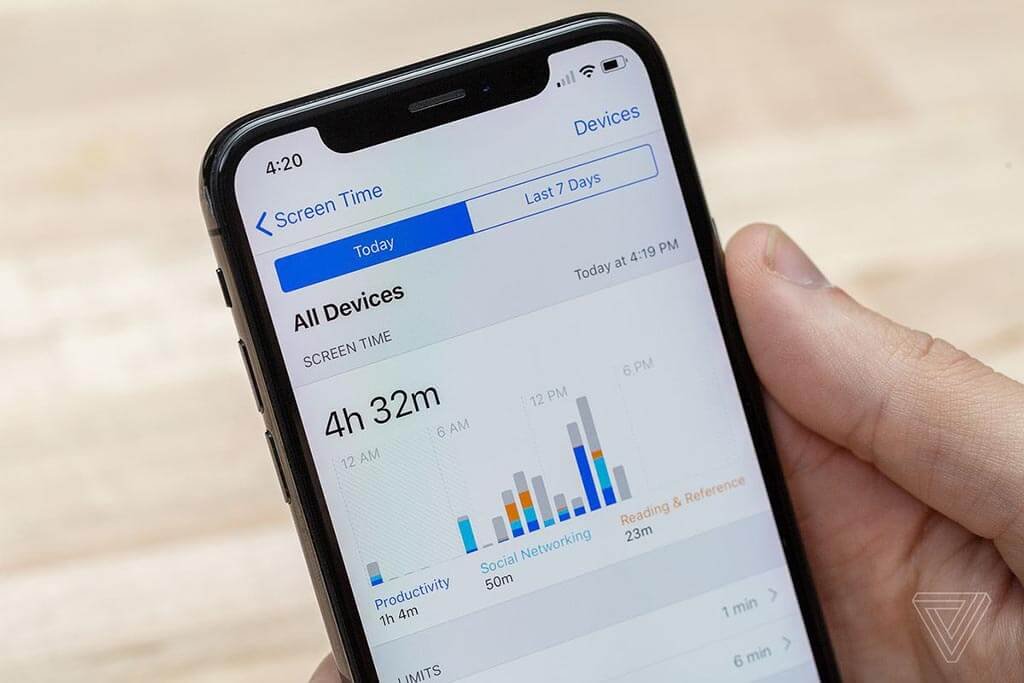‘Screen Time’ Is Over

The controversy over camouflage time is most regularly accompanied by a legitimate deal of finger-wagging: The digital skills is a ruinous behavior, similar to binge-eating curly fries, gambling on cock fights or drinking whiskey with breakfast.
Meanwhile, social scientists who’re attempting to glance the categorical psychological results of camouflage time are left in a bind. For one explain, honest correct luck discovering a “control community” of oldsters residing the nondigital lifestyles or the leisure stop to it. Young other people take up devices early, and by their teens are spending six hours a day and more on displays — with phones, laptops and iPads, guzzling from the spigot of Netflix, Hulu and YouTube.
Furthermore, traditional measures similar to “common day-to-day Fb utilization” are now practically meaningless. Keep in ideas what an particular particular person can plot in barely the time it takes to stay wide awake for a bus: text, look a comedy skit, play a video game, accumulate concert tickets, establish 5 selfies, every with a varied location of sketch ears.
Discovering out how that habits shapes an particular particular person’s lifestyles skills requires a utterly current come, one that recognizes that camouflage time isn’t very any mere behavior however now a come of lifestyles. So argued a consortium of social and files scientists recently in the journal Human-Computer Interaction. The phrase “camouflage time,” they essential, is simply too sizable to be scientifically truly helpful; it ought to no longer remotely establish the fragmented, ever-transferring torrent of photos that constitutes digital skills.
“It’s very counterintuitive to yell at this stage, however truly, no one in actuality is conscious of what the heck other persons are seeing on their displays,” said Byron Reeves, a professor of communications at Stanford and an creator on the paper. “To like what’s occurring, now we must know what precisely that is.”
Researchers savor linked day-to-day time spent on particular platforms, savor Fb, to measures of properly-being and mental health. However to invent a more compelling concept of the results of digital skills, they’ll need far more, the present paper argues. Scientists must watch over other people’s shoulders, digitally talking, and document the entire lot, on every application, that an particular particular person sees, does, and forms. The researchers call this ultra-swish-grained document a “screenome,” adapting the thought that from “genome,” the total blueprint of one’s genetic inheritance. Each particular person’s day-to-day screenome is in a similar draw routine, a sequential, disjointed sequence of displays.
“The point is, your thread is yours, mine is mine, and we put it to use to place an eye on our feelings, to steadiness info with fun, in our savor idiosyncratic come,” said Dr. Reeves, whose colleagues on the paper included researchers from Penn Whisper University, Boston University, Apple Inc. and Toyota Be taught Institute. “We’re no longer beholden to media companies to prepare or deliver what we plot.”
In arguing to impact such an come, the researchers offered the digital threads of quite quite a bit of dozen other people, recorded with consent: screenshots taken every small while for sessions starting from a day to quite quite a bit of days. Those files confirmed that folk switched from one camouflage exercise to 1 other regularly, every 20 seconds on common, and seldom spent bigger than 20 minutes uninterrupted on any one exercise, even a full-length film.
One participant’s digital thread published when all the draw via the day her camouflage utilize was once most- and least-concentrated, and where she was once all the draw via those sessions. One other discipline’s document made sure why he stopped discovering out a files yarn a pair of couple being dragged off a United Airways flight and switched to 1 other mutter: in roar to ascertain his savor reservations on United for an upcoming day out.
Maybe most appealing, the paper offered color-coded graphs of the digital threads of 30 college students, monitored over four days. The graphs published large variations in what other people outdated their displays for, as properly as of their patterns of switching from one more or much less exercise, savor e-mail, to 1 other, similar to entertainment or files. Every other people sprinkle brief sessions of labor between mountainous chunks of streaming movies and YouTube, as an instance; others seem like bouncing between e-mail, work, and files web sites compulsively.
These patterns can vary day to day, for sure, for any of us. The deeper rely on for researchers, and one which they savor no longer had an effortless come to glance, is how these transferring patterns shape day-to-day skills. Basically the most many times cited shrink back of excessive camouflage time is low mood, or despair. In a fresh glance, researchers led by Johannes Eichstaedt of the University of Pennsylvania examined (with permission) the Fb exercise of 114 other people diagnosed with despair. Using machine-discovering out algorithms, the team analyzed the train of the customers’ posts from the months and years sooner than receiving the diagnosis, and when put next these to the posts of comparable those that did no longer hurry on to impact despair.
The evaluation came upon variations in how regularly definite kinds of phrases seemed. Let’s have in mind, those that later received a despair diagnosis talked about themselves on Fb measurably more normally than those that did no longer impact the mood explain. The evaluation, while small by huge-files standards, was once the first to link to diagnoses in scientific files, and it solidified outdated correlations between online language train and low moods.
“It is a properly-documented route of, that suffering in overall contracts point of curiosity on the self, whereas mental properly-being extends point of curiosity beyond the self,” Dr. Eichstaedt said.
The researchers came upon that, by examining Fb language in this come, they can even predict whether an particular particular person was once on their come to being diagnosed with despair about 70 p.c of the time. “That’s about the bustle you glean with scientific questionnaires, and we haven’t been in a position to plot better to this point,” he said.
Incorporating screenomes from even a sample of those that was downhearted would effect the Fb files in a miles richer context, and presumably give an explanation for whether online skills certainly lowered other people’s moods — and why. It would possibly well perhaps presumably furthermore tag shared patterns of utilize in those that recovered from despair.
The link between camouflage time and persona is one other condo of intense hobby for researchers. In a 2015 glance, Dar Meshi, a cognitive neuroscientist at Freie University in Berlin, led a community of researchers who described the brain circuits that give a lift to the impulse to fragment, and which would possibly also very properly be likely linked to phases of social-media utilize.
Here, too, gathering the total screenomes of as a minimum some heavy customers of social media would possibly well presumably give an explanation for how brain biology relates to camouflage utilize. “There are so, so many exchange variables that devices can document, no longer comely train however trip of utilize, keyboard habits, frequency of switching web sites,” said Dr. Meshi, who’s now at Michigan Whisper University. “We would possibly well presumably be foolish to overlook these” as files sources.
For now, screenome evaluation can also honest enchantment basically to other people drawn to biotechnological self-discovery — those that ship their saliva to DNA-testing companies or wear devices that be conscious their footsteps and coronary heart rate.
However if the premise takes withhold in social science, it ought to also instantaneous a classic shift within the kinds of questions researchers pose. “How critical camouflage time is simply too critical” is a puzzle for a past generation. Asking which patterns of screenome exercise are problematic, and for whom, is the easier inquiry for this day.
Benedict Carey has been a science reporter for The Times since 2004. He has furthermore written three books, “How We Be taught” about the cognitive science of discovering out; “Poison Most Vial” and “Island of the Unknowns,” science mysteries for heart schoolers.




